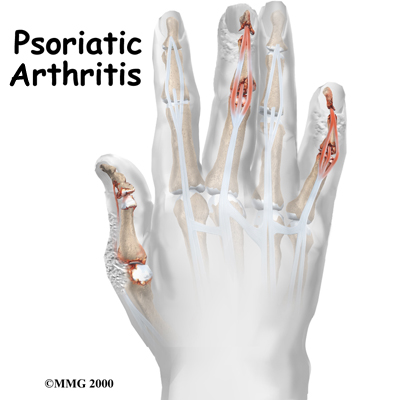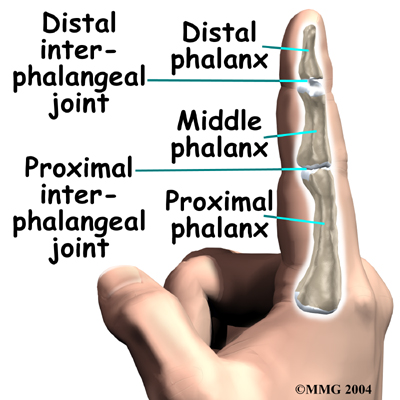How do health care professionals identify the condition?
A detailed medical history with questions about psoriasis in your family, will help your healthcare professional make a diagnosis. Patients with psoriasis may have other forms of arthritis, and the symptoms of psoriatic arthritis often look like other types of joint disease. This means that your doctor will probably do tests to rule out other diseases.
Blood studies will help rule out RA. (The RA test is usually not positive in patients with psoriatic arthritis.) Efforts are being made to find ways to identify psoriatic arthritis through a blood test. The presence of specific biologic elements called biomarkers (biologic evidence of disease) would make it possible to look for evidence of this disease before it progresses, or even before it starts. Psoriatic arthritis is common in people who test positive for HIV, the AIDS virus. As a precaution, your doctor may test your blood for HIV, especially if your symptoms are severe.
Physicians must also use other diagnostic tools such as X-rays, ultrasonography, and Magnetic Resonance Imaging (MRIs) in order to definitively diagnose psoriatic arthritis. Each one of these tests provides a little different information. For example, X-rays of affected joints will be studied both to rule out other diseases and to identify characteristics of psoriatic arthritis.
Ultrasonography, the use of sound waves to create a picture of what's going on inside, provides a better look at the whole package: bones, joints, and soft tissues. This diagnostic test is also noninvasive and does not expose the patient to any radiation. Ultrasound also has the ability to show small changes in the nails and early signs of inflammation in tendons and small joints.
MRIs can show bone marrow edema, tenosynovitis and early joint erosion. Tenosynovitis is the inflammation of the fluid-filled sheath (called the synovium) that surrounds a tendon. Unfortunately reliability is a problem with MRIs because what one examiner sees may not be the same as another observer. Changes in the small joints of the hands and feet don't show up well on MRIs like they do with ultrasonography.
One advantage MRIs do have over ultrasonography is the availability of whole body MRIs. By scanning the entire body, it is possible to identify areas of inflammation undetected by clinical examination.
Until blood studies are able to find biomarkers indicating the presence of psoriatic arthritis, physicians will have to continue to use a combination of different tests to diagnose the problem. The information these tests provide is important in determining treatment.
 Psoriasis is a disease that most people think of as primarily a skin disease because the condition causes a persistent rash in various areas of the body. Psoriatic arthritis is a type of joint disease that occurs in roughly seven percent of people who have psoriasis. Psoriatic arthritis affects people of all ages, but most get it between the ages of 30 and 50. Usually a patient has psoriasis (the skin rash) for many years before the arthritis develops, and usually the arthritis comes on slowly, however, this is not always the case. No matter what, patients with psoriatic arthritis must unfortunately manage both the outbreaks of itchy, scaly skin and the pain and stiffness of arthritis.
Psoriasis is a disease that most people think of as primarily a skin disease because the condition causes a persistent rash in various areas of the body. Psoriatic arthritis is a type of joint disease that occurs in roughly seven percent of people who have psoriasis. Psoriatic arthritis affects people of all ages, but most get it between the ages of 30 and 50. Usually a patient has psoriasis (the skin rash) for many years before the arthritis develops, and usually the arthritis comes on slowly, however, this is not always the case. No matter what, patients with psoriatic arthritis must unfortunately manage both the outbreaks of itchy, scaly skin and the pain and stiffness of arthritis.
 Patients with psoriatic arthritis fall into three groups. The first group involves patients who have what is called asymmetric arthritis. This means that only a few joints are involved and that it does not occur in the same joints on both sides of the body. (For example, only one wrist and one foot are affected.)
Patients with psoriatic arthritis fall into three groups. The first group involves patients who have what is called asymmetric arthritis. This means that only a few joints are involved and that it does not occur in the same joints on both sides of the body. (For example, only one wrist and one foot are affected.)
